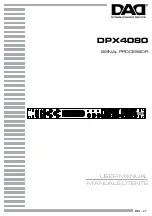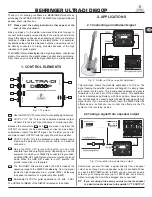
Flat Top Setting
The 9660 allows independent selection of rise time and flat top. A detector with long
charge collection times will require a flat top long enough to process all the charge
from the detector (see “Automatic Ballistic Deficit Correction” on page 44). If the flat
top is too short, it may result in low side spectral tailing and degraded resolution
(However, if these symptoms occur at high rates only, the P/Z setting may be misad-
justed. In this case, first verify the correct P/Z setting and readjust if necessary). To set
the flat top manually, start with a long value, then collect a spectrum and verify good
resolution and peak symmetry. Reduce the flat top and repeat the process. Continue
until resolution and peak symmetry begin to degrade, then set the flat top to the next
higher value. The optimal (shortest) flat top will allow the best throughput.
The rise time setting can be optimized separately to achieve the best count rate/resolu-
tion compromise. However, the optimum flat top for a detector depends somewhat on
the rise time selection. Therefore, the best correction for ballistic deficit will be
achieved by running the Auto BDC function again or manually checking the flat top
setting if the rise time is increased or decreased by a factor of two or more.
Triangular shaping may give enhanced resolution performance for small detectors hav-
ing little variability in charge collection time. To set the unit for triangular shaping,
adjust the rise time to the desired value and set the flat top to zero.
Pole/Zero Matching - Supplementary Information
Using a Square Wave Generator
1.
Driving the preamp test input with a square wave will allow a more precise
adjustment of the preamp matching.
2.
The 9660s GAIN, RISE TIME, FALL TIME and INPUT POLARITY
settings should be adjusted for the intended application.
3.
Adjust the square wave generator for a frequency of approximately 100 Hz.
4.
Connect the square wave generator’s output to the Preamp’s TEST INPUT.
5.
Remove all radioactive sources from the vicinity of the detector.
6.
Set the scope’s Channel 1 vertical sensitivity to 2 V/div, and adjust the main
time base to 10
µ
s/div.
7.
Observe the Model 9660s Monitor output. If you are using an LB1502
Clamp Box, set the switch in the DIRECT position. Adjust the scope
Appendix B - Performance Adjustments
66
Model 9660-9660A ICB Digital Signal Processor
















































